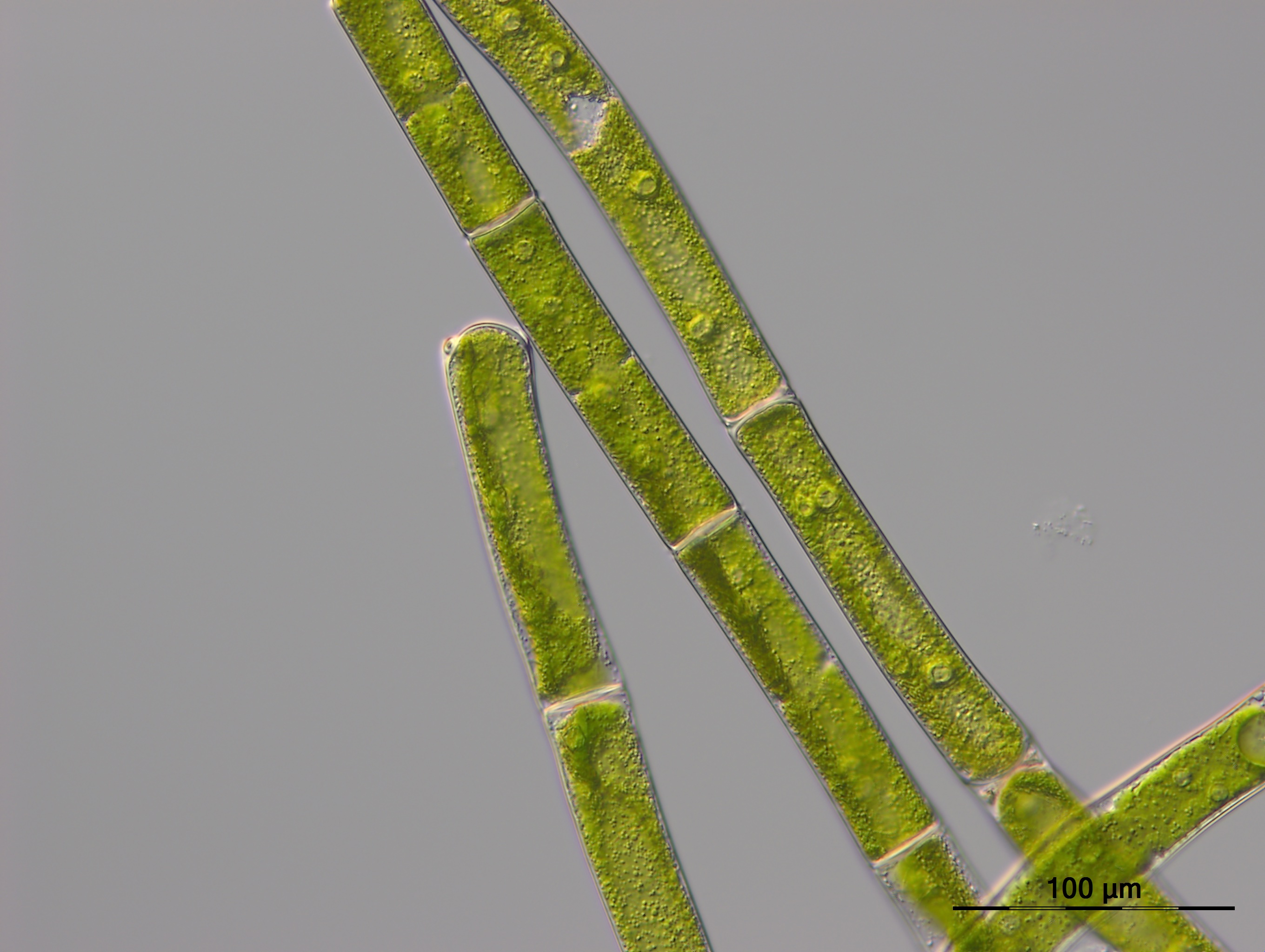Study Reveals New Clues About Land Plants’ Closest Algal Relative
UMD scientist contributes to analysis of an enigmatic species of algae, helping to bridge the evolutionary gap between land and marine organisms.
An international team of researchers has discovered that a mysterious green algae called Mougeotiopsis calospora gives new insights into the closest living relatives of land plants. First found in an Austrian peat bog, the relatively unstudied algal species belongs to a class of organisms called Zygnematophyceae, which once shared a common ancestor with terrestrial plants. The team’s findings were published in the journal Current Biology on September 1, 2022.

The discovery is a major reason why the team is proposing a new classification framework for this algal class, according to the study’s co-author Charles Delwiche, a professor of cell biology and molecular genetics at the University of Maryland.
“You can walk by a pond or an Austrian peat bog and see some algae living in there,” Delwiche said. “You may not think much of the algae, but it’s actually an organism that gives us really important insights into the evolution of other forms of life we rely on every day. By studying it, we’re gaining a better understanding about the origin of all plants—and, in many ways, about the origin of terrestrial life.”
Made up of about 4,000 species of green algae, the class Zygnematophyceae consists of organisms that are generally simple in structure, especially in comparison to land plants. Despite their simplicity, however, Zygnematophyceae shared a common ancestor with land plants and diverged to their own evolutionary pathway over 550 million years ago. This shared ancestry is what led to the research team’s efforts to trace traits like body structure throughout its lineage.
Using modern gene sequencing techniques, the researchers collected data about the molecular markers that make up algal DNA. The team was then able to reconstruct the evolutionary history of Zygnematophyceae, including the genetic relationships between the species within the class. From there, the scientists developed a general understanding of how these organisms’ bodies evolved over time.
However, a major breakthrough occurred when the team analyzed the enigmatic Mougeotiopsis, which was initially discovered over a century ago but remained mostly unstudied until now. The researchers were surprised to learn that its body structure was multicellular (Zygnematophyceae includes both single- and multi- celled species, and Mougeotiopsis had been thought to be unicellular). Additionally, the Mougeotiopsis algae lacked pyrenoids (subcellular organelles that help algae concentrate CO2 for photosynthesis) despite the fact pyrenoids are commonly found in many of its relatives. The finding is an example of an evolutionary divergence through changes in cell body structure, and evidence that the current algal classification standard for Zygnematophyceae may need amendment.
The study’s lead author, Sebastian Hess from the University of Cologne, said: “Mougeotiopsis is an exciting organism. The lack of pyrenoids is very unusual for a green alga and its close relationship to other unicellular Zygnematophyceae came as a big surprise.”
“The new framework is fundamental for performing future comparative analysis of similar organisms,” said study co-author Jan de Vries from the University of Göttingen.
The team believes that its collaborative research efforts could help scientists trace plant lineages more accurately and answer important questions about how life evolved from water onto land.
###
This article is partially adapted from text provided by the University of Göttingen.
This research was supported by the German Research Foundation (Grant Nos. 283693520, 417585753, 440231723, 440540015 and 410739858), the European Research Council (Grant Agreement No. 852725; ERC-StG ‘‘TerreStriAL’’), and made use of data collected by US National Science Foundation (Grant No. DEB- 1036506).
This paper, “A phylogenomically informed five-order system for the closest relatives of landplants,” Sebastian Hess, Shelby K. Williams, Anna Busch, Iker Irisarri, Charles F. Delwiche, Sophie de Vries, Tatyana Darienko, Andrew J. Roger, John M. Archibald, Henrik Buschmann, Klaus von Schwartzenberg, and Jan de Vries, was published in Current Biology on September 1, 2022.


